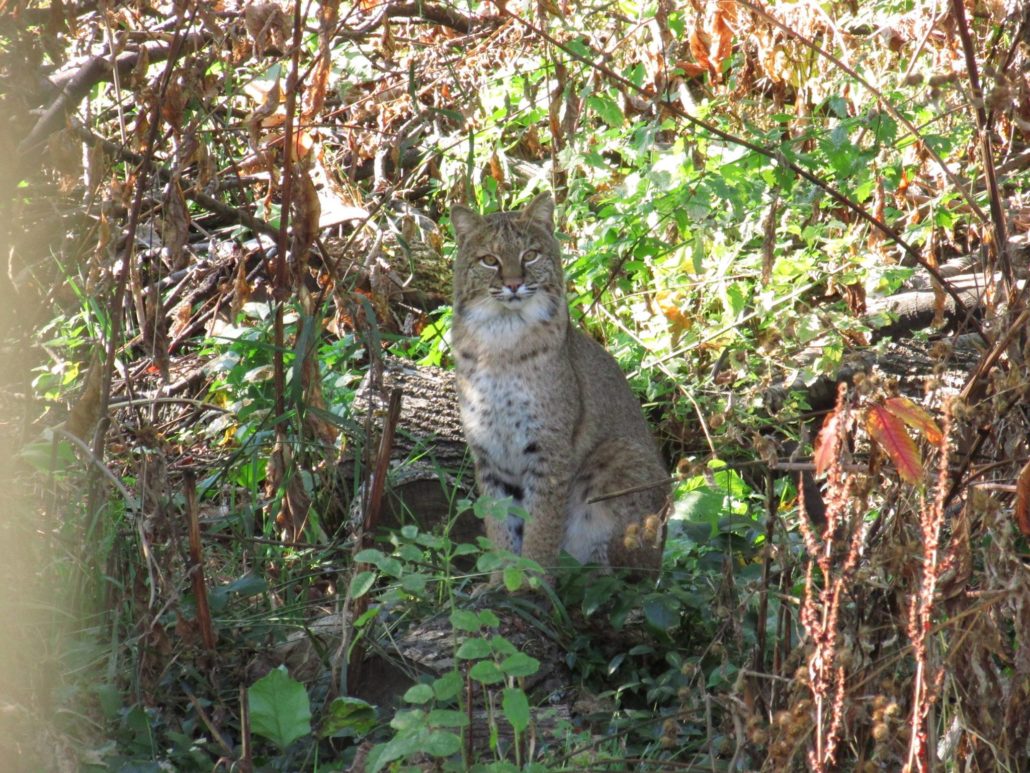Here Kitty Kitty: Fantastic Northport Bobcat Photo
Scot Wack of Northport caught an incredible photo of this bobcat just 20 feet from his house!
The University of Michigan’s Animal Diversity Web’s entry for Lynx rufus, the bobcat says (in part):
Bobcats can be found in a variety of habitats, including forests, semi-deserts, mountains, and brushland. They sleep in hidden dens, often in hollow trees, thickets, or rocky crevices.
…Bobcat fur can be various shades of buff and brown, with dark brown or black stripes and spots on some parts of the body. The tip of the tail and the backs of the ears are black. They have short ear tufts, and ruffs of hair on the side of the head, giving the appearance of sideburns.
Like many felids, bobcats are solitary animals. The male and female interact almost exclusively during the mating season. These cats rarely vocalize, although they often yowl and hiss during the mating season. Bobcats are basically terrestrial and nocturnal, although they are good climbers and are often active at dusk as well as during the night.
Bobcats are strictly meat eaters. Stealthy hunters, they stalk their prey, then pounce and (if successful) kill with a bite to the vertebrae of the neck. They hunt rodents, rabbits, small ungulates, large ground birds, and sometimes reptiles. They occasionally eat small domesticated animals and poultry.
Bobcats live up to 12 years in the wild. In captivity, they may live up to 32 years.



